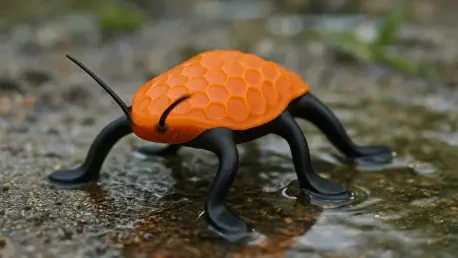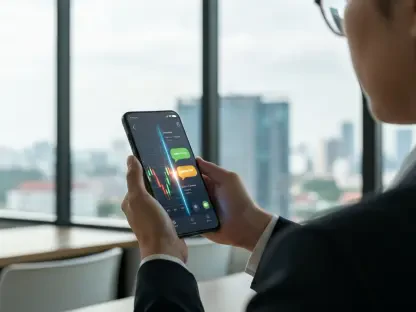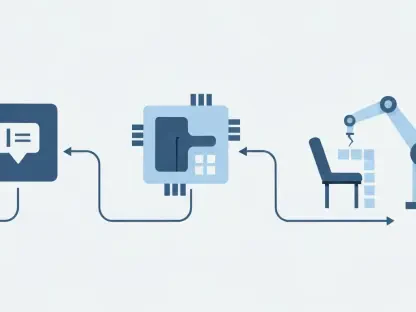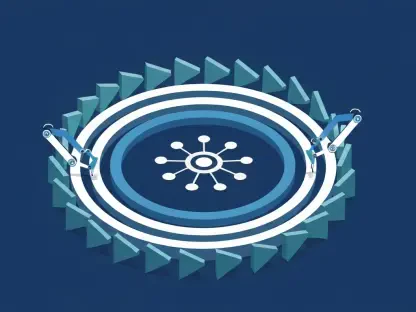I’m thrilled to sit down with Oscar Vail, a pioneering technology expert whose work in robotics, quantum computing, and open-source innovation consistently pushes the boundaries of what’s possible. Today, we’re diving into his team’s groundbreaking development of a tiny amphibious soft robot—a marvel of bionic engineering inspired by nature. We’ll explore the inspiration behind this creation, the unique advantages of soft robotics, the challenges of integrating multiple environmental responses, and the incredible potential this technology holds for real-world applications like rescue missions and environmental monitoring.
Can you tell us what sparked the idea to create this tiny amphibious soft robot?
Honestly, the natural world was our biggest muse. We were fascinated by how creatures like ants and whirligig beetles navigate such varied terrains with ease—moving from land to water without missing a beat. Their ability to react to their surroundings in a seamless, coordinated way pushed us to think about how we could mimic that adaptability in a robotic system. We wanted to build something that wasn’t just functional in one setting but could handle the unpredictability of real-world environments.
How did you go about translating those natural behaviors into a functional robotic design?
It was a process of observation and iteration. We studied how these insects respond to environmental cues and move through different mediums. For instance, whirligig beetles have this incredible way of skimming across water while maintaining speed and control. We broke down those behaviors into mechanical principles and then engineered materials and mechanisms that could replicate them. The goal was to create a robot that could roll, climb, and transition between land and water just as fluidly as these creatures do.
What sets soft robots apart from traditional rigid robots, and why do they matter for specific challenges?
Soft robots are a game-changer because they’re made from flexible, compliant materials rather than the hard, inflexible structures of traditional robots. This gives them a unique ability to deform and adapt to their surroundings, which is crucial for tasks where safety and versatility are key. Unlike rigid robots that might struggle in confined or delicate spaces, soft robots can squeeze through tight gaps or interact gently with biological tissues. They’re ideal for environments that are unpredictable or sensitive.
Can you share an example of a scenario where a soft robot would outperform a rigid one?
Absolutely. Think about a search-and-rescue mission in a collapsed building. A rigid robot might get stuck in narrow crevices or cause further damage due to its lack of flexibility. A soft robot, on the other hand, can compress and maneuver through those tight spaces, reaching trapped individuals or delivering supplies without posing a risk. Their adaptability makes them perfect for navigating rubble or other chaotic settings where traditional robots just can’t go.
Your robot responds to temperature, humidity, and magnetic fields. What drove the decision to integrate all three responses into one system?
We wanted a robot that could truly handle the complexity of real-world environments, where conditions are rarely uniform. Relying on just one stimulus, like heat or magnetism, limits a robot’s versatility. By combining temperature, humidity, and magnetic responses, we created a system that can adapt to a wide range of scenarios—whether it’s reacting to a sudden change in moisture while crossing a wetland or being steered precisely through a magnetic field. It’s about building resilience and functionality into a single design.
What were some of the hurdles in making these different responses work together without clashing?
The biggest challenge was avoiding interference between the stimuli. When you combine materials that respond to different cues, there’s a risk that one response might override or disrupt another, leading to erratic behavior. We tackled this by designing a multi-layered material where each layer handles a specific stimulus independently. It took a lot of trial and error to balance the interactions, but by segregating the functions into distinct layers, we managed to achieve harmonious control.
Can you walk us through the process of developing the multi-layered material that acts as the robot’s ‘artificial muscle’?
Sure. We started with a polyimide film, a common material in flexible electronics, and chemically modified it with a strong alkali to create a layer of polyamic acid. This layer is incredibly sensitive to temperature and humidity, expanding or contracting based on environmental changes. Then, we bonded it to a silicone rubber layer embedded with magnetic particles, which allows the robot to respond to magnetic fields for steering and movement. This layered approach ensures each response mechanism operates without interference, mimicking the synergistic adaptability we see in nature.
This robot is tiny, weighing just 8 milligrams, yet it can carry cargo over twice its weight. How did you pack so much strength into such a small package?
It’s all about optimizing the design and materials for efficiency. The multi-layered composite we developed isn’t just responsive—it’s also incredibly robust for its size. We fine-tuned the structure to maximize the force it can exert, and the magnetic layer plays a huge role in providing controlled, powerful movement. By focusing on lightweight yet strong materials, we ensured the robot could handle payloads far heavier than itself without compromising speed or agility.
The ability to move seamlessly between land and water is remarkable. What kinds of tests did you conduct to ensure it could manage those transitions?
We put the robot through a variety of real-world simulations to test its amphibious capabilities. One memorable experiment involved navigating a complex path with a small pebble as cargo. The robot had to travel underwater, climb onto dry land, and then return to water—all while maintaining control of the load. We also tested its rolling gait on slopes and obstacle courses under different conditions to confirm it could handle transitions without faltering. These tests helped us refine its design for reliability across terrains.
Looking ahead, what’s your forecast for the future of soft robotics in practical applications?
I’m incredibly optimistic about where soft robotics is headed. In the next decade, I believe we’ll see these technologies become integral to fields like disaster response, environmental monitoring, and even healthcare. Imagine swarms of soft robots inspecting underwater pipelines, navigating polluted wetlands to collect data, or delivering targeted treatments inside the human body. As we continue to refine multi-stimuli responses and improve scalability, the potential for these robots to tackle challenges in dangerous or inaccessible environments is limitless.









